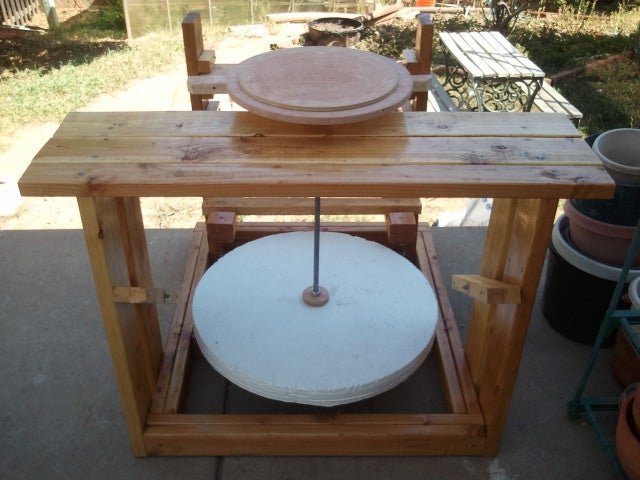How A Handmade Pottery Cup Is Made From Beginning To End
Pottery is an ancient art form that has been practiced for centuries. Handmade pottery cups, in particular, hold a special charm and uniqueness that mass-produced cups simply cannot match. This article will take you through the fascinating process of creating a handmade pottery cup, from gathering the clay to the final finishing touches.
The Art of Pottery
Pottery is a craft that involves shaping clay into functional or decorative objects. It requires skill, patience, and creativity. Handmade pottery cups are crafted with attention to detail, making each piece one-of-a-kind.
Gathering Clay
The first step in making a pottery cup is gathering clay. Potters often use locally sourced clay or purchase it from suppliers. Clay can vary in composition and texture, which affects the final product. The clay is typically dug from the earth, ensuring it is free from impurities.
Preparing the Clay
Once the clay is obtained, it needs to be prepared for molding. It is important to remove any debris or foreign objects from the clay. This is done by kneading and wedging the clay to ensure a smooth and consistent texture. Wedging also helps remove air bubbles, which can cause the pottery to crack during firing.
Shaping the Cup
After the clay is prepared, it’s time to shape the cup. Potters use various techniques such as wheel-throwing or hand-building to mold the clay. Wheel-throwing involves spinning the clay on a pottery wheel while shaping it with hands and tools. Hand-building techniques include coil pottery, slab pottery, and pinch pottery. The potter carefully molds the clay to achieve the desired shape and size of the cup.
Drying and Trimming the Cup
Once the cup is shaped, it needs to dry to remove excess moisture. This process is essential to prevent cracking during firing. The cup is left to air dry for a few hours or days, depending on its size and thickness. After initial drying, the potter trims any excess clay and refines the cup’s form, smoothing edges and adding any decorative details.
Firing the Cup
Firing is a crucial step in pottery making. It involves subjecting the cup to high temperatures to transform the clay into a solid and durable ceramic material. There are two types of firing: bisque firing and glaze firing. Bisque firing is the initial firing, which hardens the clay but leaves it porous. Glaze firing is the final firing, where the cup is coated with glaze for a glossy finish and fired again to fuse the glaze to the surface.
Glazing the Cup
Glazing adds both aesthetic appeal and functional properties to the cup. Glazes come in various colors and finishes, and the potter carefully selects the desired glaze for the cup. The glaze is applied to the cup’s surface using brushes, dipping, or spraying techniques. It is essential to achieve an even and consistent application. The cup is then left to dry before the final firing.
Final Firing and Finishing
After glazing, the cup undergoes the final firing. The kiln is heated to the appropriate temperature, which varies depending on the type of clay and glaze used. The cup is carefully placed inside the kiln and fired until the glaze reaches its melting point, creating a glass-like coating on the cup’s surface. Once the firing is complete, the cup is removed from the kiln and left to cool before the finishing touches.
FAQs
How long does it take to make a handmade pottery cup?
The time required to make a handmade pottery cup can vary depending on factors such as the complexity of the design and the drying and firing times. On average, it can take several hours or even days to complete a single cup.
Can I use a handmade pottery cup in the microwave?
Yes, handmade pottery cups are generally safe to use in the microwave. However, it is always best to check with the potter or refer to any specific instructions provided with the cup.
How should I care for my handmade pottery cup?
Handmade pottery cups should be treated with care. They are typically dishwasher-safe but may last longer if hand-washed. Avoid sudden temperature changes and handle the cup with care to prevent accidental breakage.
Can I customize the design of a handmade pottery cup?
Many potters offer customization options for their handmade pottery cups. You can discuss your preferences with the potter and explore possibilities such as personalized colors, patterns, or even engraved designs.
Are handmade pottery cups dishwasher-safe?
Handmade pottery cups are generally dishwasher-safe, but it is recommended to check with the potter or refer to any care instructions provided. Some delicate or highly decorated cups may require hand washing for better preservation.
Conclusion
Crafting a handmade pottery cup is a labor of love that requires skill, creativity, and dedication. Each step in the process contributes to the unique qualities of the final product. From gathering the clay to shaping, firing, and glazing, every decision made by the potter influences the cup’s appearance and functionality. Owning a handmade pottery cup is not just about having a functional vessel; it is about cherishing the artistry and craftsmanship behind it.






